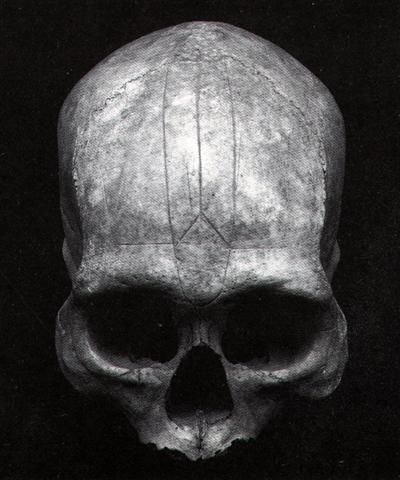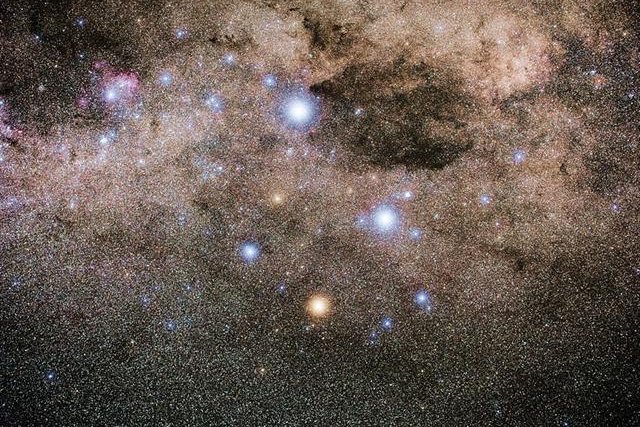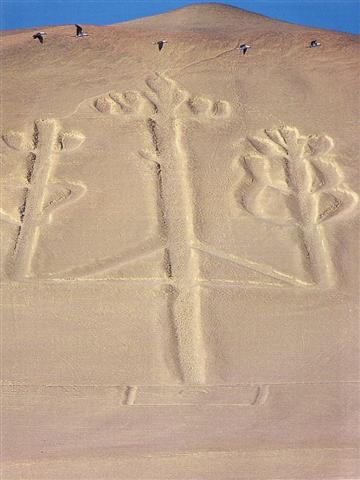Presumably the great
creation day of our present
world motivated the design
of Bb11-39:
|
Ukdah (*145.4)
'July 17 (*118)
"July 3 (*104)
JUNE 10 (161) |
|
Bunda |
Nashira |
|
Febr 11 (42) |
12 (408) |
|
'Jan 15 (*300) |
16 |
|
"Jan 1 (42 - 41) |
2 |
|
DEC 9 (7 * 7 * 7) |
10 (*264) |
|
Bb11-39 (436 + 21) |
Bb11-40 (458 = 2 * 229) |
14 |
Bb12-12 → 121 * 2 = 242 |
32 |
Bb12-45 |
| ihe haki tua pu |
ma to rutu |
mai tae rutu hia i te pahu - mai tae oho te rima |
ko te henua ia kua oti |
 |
 |
 |
 |
|
457 (= 300 + 314 / 2) |
458 |
473 |
506 (= 590 - 84) |
| Aug 13 (*145) |
14 |
29 (*161) |
Oct 1 (*194) |
| UKDAH (Knot) = ι Hydrae (145.4) ALPHEKKA MERIDIANA
|
ψ Leonis (146.4) |
No star listed (161) |
κ Crucis (194.4) |
| 7 * 7 |
|
Tua. 1. Back, shoulder, tu'a ivi, shoulder blade; tu'a ivi more, lumbago; moa tu'a ivi raá, 'sun-back chicken': chicken with a yellow back which shines in the sun. 2. Behind (a locative adverb, used with i, ki, a, o, etc). Tu'a-papa, pelvis, hips. Vanaga. 1. Behind, back, rear; ki tua, after; o tua, younger; taki tua, perineum. 2. Sea urchin, echinus. The word must have a germ sense indicating something spinous which will be satisfactorily descriptive of the sea urchin all spines, the prawn with antennae and thin long legs, and in the Maori the shell of Mesodesma spissa. Tuaapapa, haunch, hip, spine. Tuahaigoigo, tattooing on the back. Tuahuri, abortion; poki tuahuri, abortive child. Tuaivi, spine, vertebræ, back, loins; mate mai te tuaivi, ill at ease. Tuakana, elder, elder brother; tuakana tamaahina, elder sister. Tuamouga, mountain summit. Tuatua, to glean. Mgv. tua: To fell, to cut down. Ta.: tua, to cut. Mq.: tua, to fell, to cut down. Ma.: tua, id. Tuaki, to disembowel. Ma.: tuaki, to clean fish. Tuavera, the last breadfruit spoiled by the wind. Ta.: tuavera, burnt by the sun. Churchill.
Oti, To come to an end; to suffice, to be enough: ku-oti-á, it is finished; ina kai oti mo kai, there is not enough to eat; he-oti á, there isn't anymore left, it's the last one; it's enough with that. Vanaga. Ta.: 1. Oti, presage of death. Sa.: oti, to die. 2. To cut. Mq.: koti, oti, id. Sa.: 'oti, id. Ma.: koti, id. Churchill.

|
|
CLOSE TO THE
FULL MOON: |
|
Mahar sha hi-na Shahū-26 (Western One in the Tail of the Goat)
NASHIRA = γ Capricorni (328.0), ν Oct. (328.3), AZELFAFAGE = π¹ Cygni, κ Capricorni (328.7) |
Arkat sha hi-na Shahū-27 (Eastern One in the Tail of the Goat)
ENIF (The Nose) = ε Pegasi, ERAKIS = μ Cephei (329.2), 46 CAPRICORNI, JIH (the Sun) = κ Pegasi (329.3), ι Piscis Austrini (329.4), λ Capricorni (329.6), ν Cephei (329.7), DENEB ALGIEDI = δ Capricorni (329.8)
*288.0 = *329.4 - *41.4 |
14 |
ρ Gruis (344.0), MATAR (Rain) = η Pegasi (344.2), η Gruis (344.6), β Oct. (344.7) |
32 |
CIH (Whip) = γ Cassiopeiae, λ Tucanae (12.4), φ³ Ceti (12.6), μ Andromedae (12.8)
*336.0 = *12.4 - *41.4 |
|
Febr 12 (408) |
13 |
28 (408 + 16 = 424) |
April 2 (457 = 365 + 92) |
|
... The month, which takes its name from Juppiter the oak-god, begins on June 10th and ends of July 7th. Midway comes St. John's Day, June 24th, the day on which the oak-king was sacrificially burned alive. The Celtic year was divided into two halves with the second half beginning in July, apparently after a seven-day wake, or funeral feast, in the oak-king's honour ...
When Ukdah (the Knot) returned to visibility 16 days after its close encounter with the Sun in August 13 (225) the Full Moon was at the opposite side of the sky dome at Matar (the Rain), i.e. at the right ascension line *344 - corresponding to day 80 + 344 = 408 (February 28, the final day of February). The Sun was in day 408 - 183 = 225 (August 13).
The month of the oak-god began in June 10 (161) - possible to write as 10/6 - which was 80 days earlier than August 29 (225 + 16). The star which in June 10 returned to visibility after its close encounter with the Sun should be a star in day 161 - 16 = 145 (May 25, *65), when the Full Moon would have been in day 145 + 183 = 328 (November 24, *248 = 8 times 31 right ascension days = 8 * 41 - 80). This star was Ain (ε Tauri, the Eye of the Bull, *65). A month later the Full Moon would arrive at Christmas Eve and another 33 nights later the Full Moon would be in day 358 + 33 = 300 + 91 = 66 days before April 2 (457 = 300 + 157 = 365 + 92). Hia!
.jpg)
|


When the Sun reached κ
Crucis the Full Moon would
be where they fettered the
Wolf, i.e. at the cardinal
point which south of the
equator (on Easter Island)
corresponded to April 1 (=
October 1):
|
te manu te
henua |
|
te Rei |
kua
hakagana |
te henua |
honu |
te henua |
 |
 |
 |
 |
 |
 |
 |
|
Ca1-9 |
Ca1-10 |
Ca1-11 |
Ca1-12 |
Ca1-13 |
Ca1-14 |
Ca1-15 |
|
CLOSE TO THE
SUN: |
|
Sept 29 |
(3 * 91 = 273) |
|
Oct 1 |
2 |
3 |
4 (277) |
5 |
|
ι Crucis
(192.2), β
Muscae (192.5),
MIMOSA = β
Crucis
(192.9) |
No star listed
(193) |
κ
Crucis (194.4),
ψ
Virginis
(194.5),
μ
Crucis,
λ
Crucis (194.6),
ALIOTH (Fat
Tail) =
ε
Ursae Majoris,
ι
Oct.
(194.8)
*153.0 = *194.4
- *41.4 |
MINELAUVA =
δ
Virginis
(195.1),
COR CAROLI =
α
Canum Ven.
(195.3) |
δ
Muscae (196.5),
VINDEMIATRIX
(Grape Gatherer)
=
ε
Virginis
(196.8) |
13h (197.8)
ξ¹ Centauri
(197.1), ξ²
Centauri (197.9) |
APAMI-ATSA
(Child of
Waters) =
θ
Virginis,
ψ
Hydrae (198.5),
DIADEM =
α
Com. Ber.
(198.9) |
|
'Sept 2 |
3 |
4 |
5 |
6 |
7 (250) |
8 |
|
"Aug
19 |
20 |
21 |
22 |
23 |
24 (236) |
25 |
|
JULY 27 |
28 |
29 (210) |
30 |
31 |
AUG 1 |
2 |
|
CLOSE TO THE
FULL MOON: |
|
March 30 (454) |
31 (365 + 90) |
|
April 1 |
2 |
3 |
4 |
5 (95) |
|
ξ
Phoenicis (9.0),
ρ
Tucanae (9.1),
DENEB KAITOS
(Tail of the Sea
Beast) =
β
Ceti,
η
Phoenicis (9.4),
AL NITHĀM
(String of
Pearls) =
φ¹
Ceti
(9.6)
*333.0 = *9.4 -
*41.4 |
ACHIRD (Woman
with Luminous
Rays) =
η
Cassiopeiae
(10.7) |
Legs-15 (Wolf)
ν
Andromedae
(11.0),
φ²
Ceti (11.1),
ρ
Phoenicis
(11.2),
η
Andromedae
(11.4)
*335.0 = *11.4 -
*41.4 |
CIH (Whip) = γ
Cassiopeiae, λ
Tucanae (12.4),
φ³ Ceti (12.6),
μ Andromedae
(12.8)
*336.0
= *12.4 - *41.4 |
φ4 Ceti (13.2) |
No star listed
(14) |
1h (15.2)
β Phoenicis
(15.1), υ
Phoenicis, ι
Tucanae (15.6),
η Ceti, ζ
Phoenicis (15.7) |
|
'March 3 |
4 |
5 (64) |
6 |
7 |
8 |
9 |
|
"Febr 17 (413) |
18 |
19 (50) |
20 |
21 |
22 |
23 |
|
JAN 25 |
26 |
27 (392) |
28 |
29 |
30 |
31 |
|
... Ana
appears to be
related to the
Tuamotuan
ngana-ia,
'the heavens'.
Henry translates
ana as
aster, star.
The Tahitian
conception of
the sky as
resting on ten
star pillars is
unique and is
doubtless
connected with
their cosmos of
ten heavens. The
Hawaiians placed
a pillar (kukulu)
at the four
corners of the
earth after
Egyptian
fashion; while
the Maori and
Moriori
considered a
single great
central pillar
as sufficient to
hold up the
heavens. It may
be recalled that
the Moriori
Sky-propper
built up a
single pillar by
placing ten
posts one on top
of the other ...
... Crux lies in
the Milky Way, -
here a brilliant
but narrow
stream three or
four degrees
wide, - and is
noticeable from
its compression
as well as its
form, being only
6º in extent
from north to
south, and less
in width, the
upper star a
clear orange in
color, and the
rest white; the
general effect
being that of a
badly made kite,
rather than a
cross ...
... Whittier
said, in his
Cry of a Lost
Soul: 'The
Cross of pardon
lights the
tropic skies';
which is correct
for our day, as
it is not now
entirely visible
above 27º 30' of
north latitude.
It was last seen
on the horizon
of Jerusalem -
31º 46' 45'' -
about the time
that Christ was
crucified. But
3000 years
previously all
its stars were
7º above the
horizon of the
savages along
the shores of
the Baltic Sea,
in latitude 52º
30' ...
Von Humboldt
adds: The two
great stars,
which marks the
summit and the
foot of the
Cross, having
nearly the same
right ascension,
it follows that
the
constellation is
almost
perpendicular at
the moment when
it passes the
meridian. This
circumstance is
known to the
people of every
nation situated
beyond the
Tropics or in
the southern
hemisphere. It
has been
observed at what
hour of the
night, in
different
seasons, the
Cross is erect
or inclined. It
is a time piece,
which advances
very regularly
nearly four
minutes a day,
and no other
group of stars
affords to the
naked eye an
observation of
time so easily
made. How often
have we heard
our guides
exclaim in the
savannahs of
Venezuela and in
the desert
extending from
Lima to
Truxillo,
'Midnight is
past, the Cross
begins to bend'
...
 |

|



.jpg)




